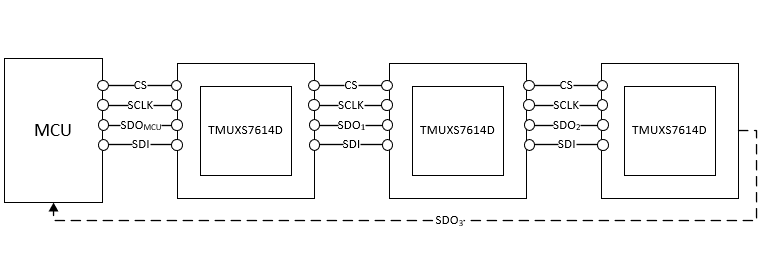SCDA051 June 2024 TMUXS7614D
3 Daisy Chain Mode
One unique feature of the TMUXS7614D is the ability to go into Daisy Chain mode, which allows to connect multiple devices in a chain and send SPI signals to open and close selected individual switches. A single SPI signal can be sent and passed through, to control all the channels across the entire system of multiplexers.
The TMUXS7614D device has eight independent SPST (single-pole, single-throw) switches, controlled through the SPI. The layout is simple; due to the capability to operate without any external components. This is because 0.1µF decoupling capacitors are integrated into the device for VDD, VSS, and VL. When in daisy chain mode, multiple TMUXS7614D devices are connected together and can be controlled independently from each other. Meaning each channel on each mux can be controlled individually, depending on the SPI command sent to the mux. This is depicted in Figure 3-1, where there are three devices on three different EVM boards connected in daisy chain and communicating to each other using SPI signals. Notice how the last device on the chain (device 3) communicates back to the MCU.
 Figure 3-1 TMUXS7614D in Daisy Chain Mode Communicating Using SPI Signals Sent by the MCU
Figure 3-1 TMUXS7614D in Daisy Chain Mode Communicating Using SPI Signals Sent by the MCU